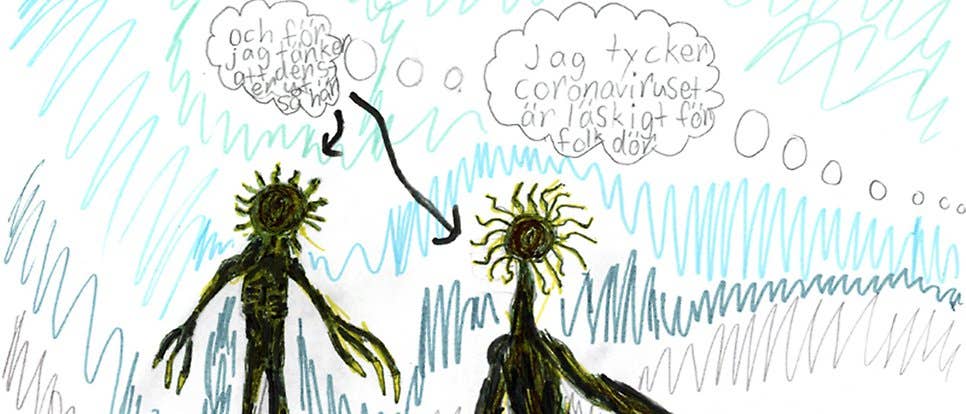Drawings from children reveal their perceptions and experiences of the COVID pandemic
The impact of the COVID-19 pandemic on children’s understanding and emotional response has been more profound than commonly perceived.

The impact of the COVID-19 pandemic on children's understanding and emotional response has been more profound than commonly perceived, as revealed by a recent study conducted by the Children's Health and Wellbeing Assessment Project (CHAP) at the Department of Public Health and Caring Sciences, under the aegis of the Public Health Agency of Sweden.
This study illuminates the nuanced perceptions and emotional intelligence of children aged 7 to 11, offering valuable insights into how they internalized and responded to the global crisis.
CHAP's investigation was part of a larger endeavor by the Public Health Agency to assess "The Consequences of the Pandemic for Children and Young People." Researchers at CHAP delved into over 450 children's drawings collected during 2020-2021 by the Swedish Children’s Picture Archive, accompanied by descriptive texts that provided context to the visual expressions.
Sofia Gjertsson, a research assistant at CHAP and a key contributor to the study, explains the methodology: “Our group has a history of studying younger children's drawings. We knew this archive offered a rich trove of insights. Drawings, often more than words, reveal children’s thoughts, feelings, and opinions vividly.”
The findings of this study partly aligned with existing understandings but also presented some surprising elements. Children demonstrated a robust grasp of the pandemic’s dynamics, such as the virus's origin, spread mechanisms, the countries heavily impacted, and the societal restrictions imposed.
"Children showed a significant health literacy, echoing what we've observed in previous studies," Sofia notes.
Related News
However, the emotional content of the drawings revealed unexpected layers of sentiment. Children expressed not only a grasp of factual information but also complex emotions like anger, frustration, and empathy, particularly concerning the risks to vulnerable family members like elderly relatives.
"The inability to meet grandparents, who play a pivotal role in their lives, emerged as a significant source of distress," Sofia adds.
When asked to elaborate on how children personified the virus, Sofia describes, “For some, the virus took on the characteristics of a villainous ‘creature’, often depicted as ‘evil’ or ‘bad’. This anthropomorphism, where the virus was seen as an antagonist in a battle of good versus evil, underscores the influence of narrative frameworks like fairy tales in children’s cognitive processing.”
Interestingly, despite the menacing portrayal of the virus, the drawings suggested that children’s primary fears were less about personal susceptibility to the illness and more about the social repercussions—missing out on leisure activities and social interactions due to the pandemic restrictions.
The research findings underscore the importance of considering children's perspectives in managing societal crises. “Children have a surprisingly strong ability to look beyond their immediate concerns; they grasp complex global issues," Sofia asserts. This realization leads to an advocacy for greater inclusion of children in societal discourse, not only during health crises but across all types of emergencies, including environmental disasters and geopolitical conflicts.
"The pandemic may be largely behind us, but other crises continue to emerge. Engaging children in these discussions can help them feel that they are active participants in matters that affect their and their community's future,” Sofia concludes, emphasizing the necessity of collaborative efforts that involve children actively, ensuring that they are not merely passive subjects in the narrative of global and local events.
This study by CHAP, through its analysis of children's artistic expressions, highlights the depth of children’s perceptual and emotional capacities. It calls for a recalibration of how society views its younger members—not just as passive observers but as insightful, responsive participants in their own right. Engaging with children about global issues in a manner that respects their insights could enrich societal response strategies and foster a generation that feels valued, heard, and involved.
For more science news stories check out our New Innovations section at The Brighter Side of News.
Note: Materials provided above by the The Brighter Side of News. Content may be edited for style and length.
Like these kind of feel good stories? Get the Brighter Side of News' newsletter.



